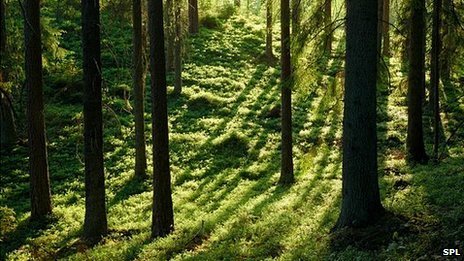
A new research suggests that some Scandinavian trees survived the last Ice Age, challenging a widely held notion that they were killed off by the huge ice sheet that covered the region.
Modern trees in Scandinavia were thought to descend from species that migrated north when the ice melted 9,000 years ago.
But research suggests some conifers survived on mountain peaks that protruded from the enormous ice sheet, on islands and in coastal areas.
The work appears in Science journal.
“Our results demonstrate that not all the Scandinavian conifer trees have the same recent ancestors, as we once believed,” said Prof. Eske Willerslev from the Centre for GeoGenetics, University of Copenhagen.
“There were groups of spruce and pine that survived the harsh climate in small ice-free pockets, or in refuges, as we call them, for tens of thousands of years, and then were able to spread once the ice retreated.
“Other spruce and pine trees have their origins in the southern and eastern ice-free areas of Europe. Therefore, one can now refer to ‘original’ and later naturally <<introduced>> Scandinavian conifer species.”

The researchers came to their conclusions by studying the DNA of modern spruce – which clearly portrays two Scandinavian types – and also by analysing the composition of pine and spruce DNA in sediments from lake-core samples.
“One hypothesis is that trees were able to survive on the top of nunataks, the exposed ridges or peaks of mountains protruding from glacial cover, or in more sheltered areas close to the coast where proximity to the temperate conditions of the Atlantic Ocean favoured survival,” said Laura Parducci, from the University of Uppsala.
“These areas must have provided sites for roots to anchor and trees to grow in the challenging climate.”
Today, nunataks can be found protruding from the Greenlandic ice sheet, albeit without any trees.